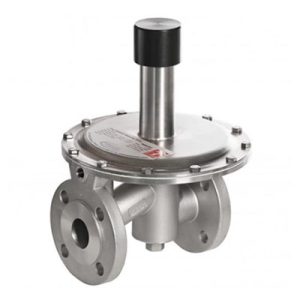Steam PRSPRDS
Steam pressure reducing and desuperheating stations, also known as steam PRDS stations, are integral components of steam distribution systems. They are designed to reduce the high-pressure steam from a main supply line to a lower, usable pressure and simultaneously control the temperature of the steam by removing superheat. These stations play a crucial role in various industrial applications that require steam at specific pressure and temperature levels. Here are the key features and functions of steam pressure reducing and desuperheating stations:
- Pressure Reduction: The primary function of a steam PRDS station is to reduce the pressure of high-pressure steam to a desired lower pressure. This is accomplished by employing pressure-reducing valves (PRVs) or control valves. These valves maintain a constant downstream pressure by throttling the flow of steam, allowing for safe and efficient steam utilization.
- Desuperheating: In addition to pressure reduction, steam PRDS stations also incorporate desuperheating mechanisms to control the steam temperature. Desuperheating is the process of reducing the superheat or excess temperature of steam by injecting water or a cooling medium into the steam flow. This ensures that the steam temperature is within the desired range for the specific application.
- Temperature Control Methods: Steam desuperheating can be achieved through various methods, including: Water Injection: The most common method is injecting a controlled amount of water into the steam flow, which rapidly evaporates and absorbs the superheat, lowering the steam temperature. Atomization: Atomizing nozzles or spray systems can be used to disperse fine water droplets into the steam, facilitating rapid and uniform heat transfer. Mechanical Mixing: Some desuperheating stations utilize mechanical devices, such as desuperheater spools or vanes, to promote thorough mixing between the steam and injected water, resulting in temperature reduction.
- Instrumentation and Control: Steam PRDS stations incorporate instrumentation and control systems to monitor and regulate the pressure and temperature of the steam. Pressure and temperature transmitters, control valves, actuators, and control loops are employed to maintain the desired set points and ensure accurate and reliable operation.
- Safety Features: Steam PRDS stations often include safety features to protect against excessive pressure or temperature conditions. These may include pressure relief valves, temperature alarms, or shutdown systems to prevent equipment damage or ensure personnel safety.
- Modular Skid Design: Steam PRDS stations are commonly designed as compact, skid-mounted units for ease of installation and maintenance. The skid-mounted design includes all necessary components, such as valves, piping, instruments, and control systems, pre-assembled and tested as a single unit.
- Application-Specific Customization: Steam PRDS stations can be customized to meet the specific requirements of different industrial applications. Factors such as steam pressure range, temperature control accuracy, flow capacity, material compatibility, and environmental conditions are considered during the design and engineering process.

Steam pressure reducing and desuperheating stations are critical in industries such as power generation, oil and gas, chemical processing, pulp and paper, and many others. They ensure the safe and efficient utilization of steam by controlling both pressure and temperature, enabling process optimization, equipment protection, and energy conservation.





